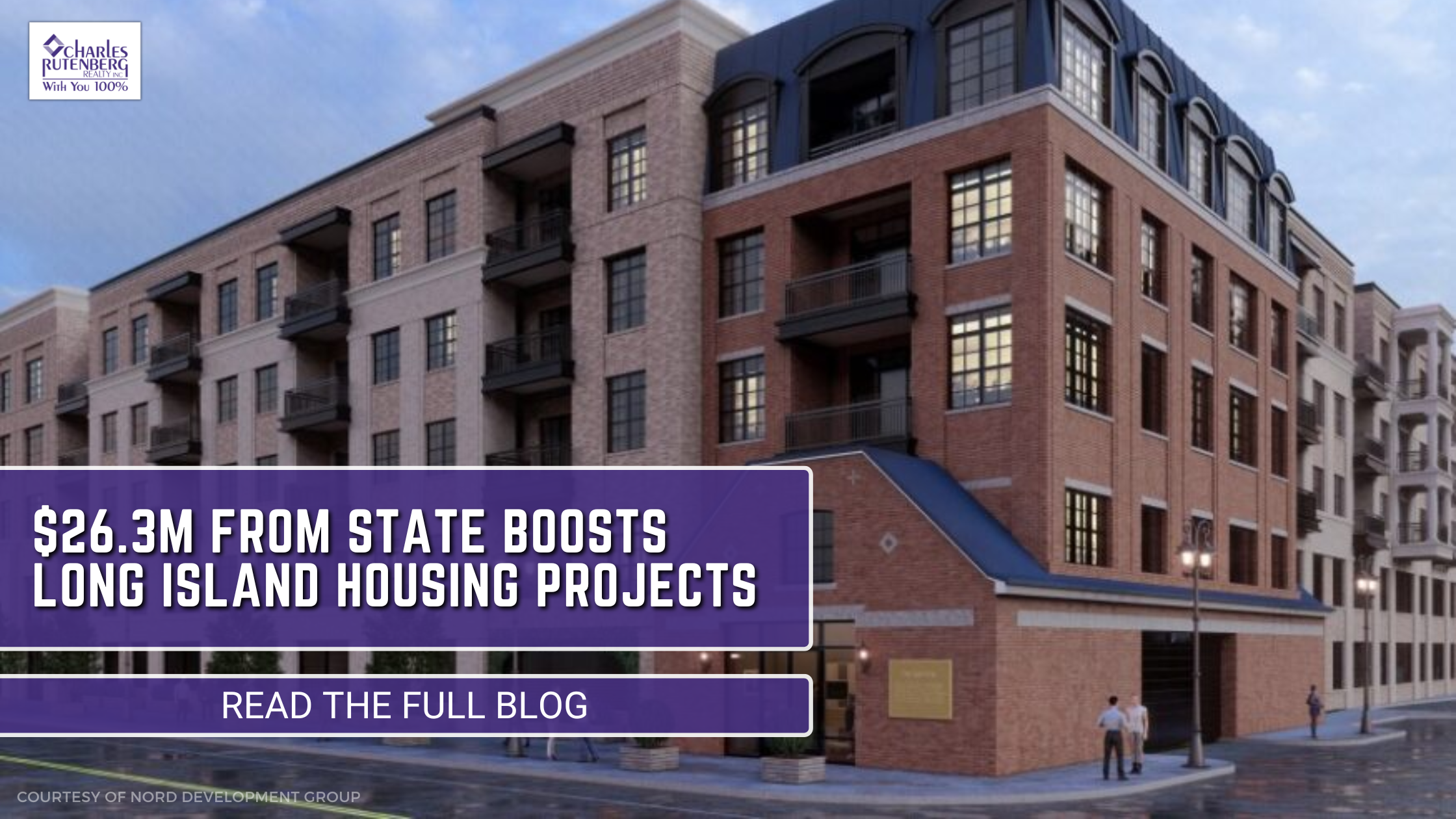$26.3M State Boost Fuels 748 New Long Island Homes — Here’s What It Means for Buyers, Renters Centers

$26.3M State Boost Fuels 748 New Long Island Homes — Here’s What It Means for Buyers, Renters & Town Centers
Long Island just scored a major housing win. The state awarded $26.3 million to five multifamily projects across Nassau and Suffolk, unlocking 748 new apartments, 346 of them affordable or workforce units. The funding flows through the Long Island Investment Fund (LIIF), a $350 million initiative aimed at jump-starting projects with real community impact.
The quick take
-
Five projects, $26.3M in grants, 748 units total
-
346 affordable/workforce homes spread across both counties
-
Largest award: $8M to Carriage House in Patchogue (262 units; 53 affordable)
-
Emphasis on transit access, downtown revitalization, and infrastructure (think sewer upgrades and walkable main streets)
Where the money’s going
Patchogue: Carriage House (Nord Development Group) — $8M
A 262-unit, two-building mixed-use community on ~4 acres downtown, including 53 affordable units and infrastructure improvements that benefit the wider area. Despite today’s high-cost environment, the project has secured construction financing and is moving forward.
Baldwin: The Grand at Baldwin (Breslin Organization) — $6M
A 215-unit transit-oriented community rising across from the Baldwin LIRR station—exactly the kind of infill that helps commuters and local shops. Village-scale retail is planned at street level.
Southampton (Quiogue): The Preserve at South Country Road (NRP Group) — $4M
A 79-unit workforce garden-style community with amenities and specialized units for veterans and individuals with disabilities—a big step for year-round housing on the South Fork.
Bellport: Alegria South (D&F Development Group) — $4.5M
A 96-unit affordable community on 7 acres, including specialized units for individuals with developmental disabilities and veterans—adding stability and services on the South Shore.
Central Islip: One Carleton Green — $3.8M
A three-story, mixed-use building with 96 affordable apartments, advancing Central Islip’s ongoing downtown comeback.
Why it matters for the Long Island market
-
Inventory relief (finally): With 748 units—and a meaningful slice affordable—these projects won’t solve the shortage alone, but they’ll cool some pressure in downtowns where demand is white-hot.
-
Commuter convenience: Multiple projects sit at or near rail/downtown corridors, shrinking commute times and car dependence—catnip for renters who prize time and walkability.
-
Stabilizing rents: New supply—especially at workforce price points—helps temper rent spikes over time, while amenities and mixed-use design lift the surrounding commercial blocks.
-
Infrastructure upgrades: The Patchogue grant specifically backs infrastructure (like sewer work), a behind-the-scenes win that enables future housing and cleaner waterways.
What buyers, sellers, and investors should watch
-
Lease-up timelines: Financing and grant awards suggest 2025–2027 deliveries are realistic; earlier sites (Baldwin, Patchogue) appear furthest along. Track local approvals and construction starts for exact dates.
-
Amenity arms race: Expect modern finishes, parking, and clubhouses—features that can influence comps for nearby rentals and even condo conversions.
-
Downtown comps: New doors bring foot traffic. If you own or eye retail/office near these sites, watch for improving rents and lower vacancy once buildings open.
Neighborhood-by-neighborhood vibe check
-
Patchogue: Already a nightlife and dining magnet; Carriage House adds residents steps from Main Street and the riverwalk—good news for restaurants and year-round vitality.
-
Baldwin: A long-planned transit-oriented vision getting real. Proximity to the LIRR = draw for NYC commuters who still want Nassau schools and suburban feel.
-
Southampton/Quiogue: Workforce homes close to jobs on the East End, easing seasonal stress and offering year-round renters a path to stay local.
-
Bellport & Central Islip: Purpose-built affordability with supportive features—exactly what many local families need to stabilize and grow.
FAQ
When was this funding announced?
This LIIF housing round was announced in late September 2025.
How many affordable units are included?
346 affordable/workforce units across the five developments.
Which project got the biggest grant?
Carriage House in Patchogue received $8 million—the largest award in this round.
What makes these “transit-oriented”?
Baldwin is directly across from its LIRR station, and the others are embedded in walkable downtowns or close to job centers—key criteria for reducing car trips and supporting local business.
Will these projects move the needle on rents?
New supply helps—especially with a large affordable component—but expect neighborhood-specific impacts. Downtown units often command premiums while still easing overall pressure.
I’m a buyer/seller near one of these sites—what should I do now?
-
Sellers: Highlight proximity to new amenities and transit; buyers love future upside.
-
Buyers: Evaluate walkability and school districts; new mixed-use can add long-term value.
-
Investors: Track construction milestones and pre-leasing; consider nearby retail plays.
